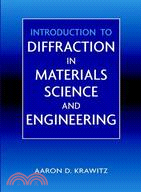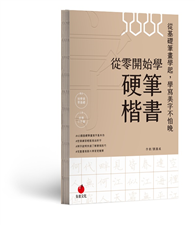| FindBook |
有 1 項符合
INTRODUCTION TO DIFFRACTION IN MATERIALS SCIENCE AND ENGINEERING的圖書 |
 |
INTRODUCTION TO DIFFRACTION IN MATERIALS SCIENCE AND ENGINEERING 作者:KRAWITZ 出版社:JOHN WILEY & SONS,LTD 出版日期:2001-04-05 規格: / 精裝 / 424頁 |
| 圖書館借閱 |
| 國家圖書館 | 全國圖書書目資訊網 | 國立公共資訊圖書館 | 電子書服務平台 | MetaCat 跨館整合查詢 |
| 臺北市立圖書館 | 新北市立圖書館 | 基隆市公共圖書館 | 桃園市立圖書館 | 新竹縣公共圖書館 |
| 苗栗縣立圖書館 | 臺中市立圖書館 | 彰化縣公共圖書館 | 南投縣文化局 | 雲林縣公共圖書館 |
| 嘉義縣圖書館 | 臺南市立圖書館 | 高雄市立圖書館 | 屏東縣公共圖書館 | 宜蘭縣公共圖書館 |
| 花蓮縣文化局 | 臺東縣文化處 |
|
|
- 圖書簡介
Fundamentals and practical applications of diffraction for researchers, engineers, and students
Materials science relies heavily on diffraction for the analysis of materials. Introduction to Diffraction in Materials Science and Engineering is a survey of the practical aspects of this valuable tool. Though it contains basic discussion of the theory and physics of diffraction, this book emphasizes understanding and the practical application of diffraction in materials science-making it a valuable text and resource for students, professionals, and researchers.
Designed as a teaching and self-study text, this resource begins with a treatment of the fundamentals of crystallography and crystal structure and its importance in diffraction before moving on to cover important aspects of diffraction applications. Numerous examples and problems at the end of each chapter, including critical thinking questions, make this an excellent tool for learning and understanding. The book includes treatments of:
* Basics of crystallography
* Geometrical representation of crystals and reciprocal space
* X-rays and neutrons
* Structure factors and intensity
* Powder diffraction
* Qualitative (Powder Diffraction File) and quantitative phase analysis
* Use of the International Tables for more complex structures and the Reitveld method
* Residual stress
* Introductions to texture, small diffracting units, and long-range order
Aaron Krawitz provides both a practical introduction to diffraction that suits the needs of students and a resource for professionals already at work in materials science or engineering who want to utilize the power of diffraction in the study of materials. - 作者簡介
AARON D. KRAWITZ is Professor of Mechanical and Aerospace Engineering at the University of Missouri, Columbia, Missouri.
- 目次
Preface.
Crystallography.
Geometrical Representation of Crystals.
X-Rays.
Neutrons.
Diffraction.
Diffraction Peak Intensity and Measurement.
Two-Dimensional Recording Methods.
Phase Analysis.
Diffraction from More Complex Structures.
Stress Analysis.
Other Kinds of Materials Characterization Using Diffraction.
Appendix A: Some Crystallographic Relationships.
Appendix B: X-Rays.
Appendix C: Neutrons.
Appendix D: Energies of K Emission Lines.
References.
Index.
|











